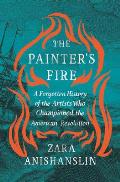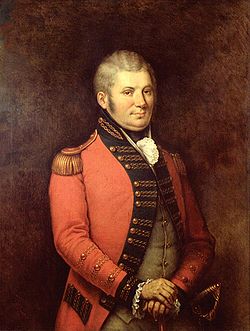The Short Life of Thomas Hawkshaw
There were multiple Thomas Hawkshaws in the British military in the late eighteenth century. Modern genealogical websites offer information, but it’s contradictory and conflated.
This week I lucked out in finding a reliable source: the monument Hawkshaw’s widow paid to install inside St. Fechins Church in Termonfeckin, County Louth, Ireland. It reads:
To the memory of Thomas Hawkshaw, late of the 5th regt of foot who died 22d Jan 1793 aged 42 years.That source in turn helped me to find more, so I can fill out the life of Thomas Hawkshaw.
Also to the memory of his son John William, Lieut in the 90th regt. Born 11th Octr 1785, and died 14th Novr 1812. And of his son Thomas, who was born 9th Decr 1788 and died in 1802. And of his son Wallop Brabazon Hawkshaw, late Lieut of the Vigo man of war, who was born 30th June 1790, and died 30th Septr 1813.
Captain Thomas was son to the Revd. John Hawkshaw of the Co. of Monaghan. His widow Vincentia, daughter of Wallop Brabazon Esqr, has erected this monument to the memory of her husband and all her offspring.
Also to the memory of Vincentia, Widow of the above Captain Hawkshaw. She died 1st Feby 1825, aged 78.
After growing up in Dublin, John Hawkshaw graduated from Trinity College in 1734 and took an M.A. three years later. Taking holy orders in the Church of Ireland, he was vicar at Clontibret, then rector at Monaghan starting in 1740. Three years later, he married Elizabeth Madden, a daughter of the Rev. Samuel Madden, D.D.; she was seven years his senior. The couple started having children. Thomas was born in 1751 and named after a paternal uncle.
From 1759 to 1762, the Rev. John Hawkshaw was the rector at Dromore, County Tyrone. He then accepted a calling at Tydavnet, back in County Monaghan, and remained the rector there for the rest of his life.
Some of the Hawkshaw brothers followed their father into the clerical profession while others, including Thomas, joined the British military. He was still in his early twenties when he was so gravely wounded on 19 Apr 1775. During the war he rose to the rank of captain.
According to Evelyn Hawkshaw Rogers’s Descendants of John Hawkshaw of Louisburgh, County Mayo, Ireland, Capt. Hawkshaw retired from his company in Belfast in 1786. He married Vincentia Brabazon, and they started their own family, including sons John William, Thomas, and Wallop Brabazon (named after his maternal grandfather).
Thomas Hawkshaw’s mother died in 1787. The death of one of Thomas’s younger brothers is recorded by an inscription in Chester Cathedral:
Adjacent lie the remains ofThe Rev. John Hawkshaw died later that same year.
George Hawkshaw Esqr
a native of Ireland and
Sixteen years a Lieutenant in
His Majesty’s Marine Forces
Returning after a long voyage
to an aged Father
and expecting friends
He was arrested here
by the hand of God
the ninth day of May
MDCCXCII [1792]
in the xxxivth year of his age.
Hugh Hawkshaw and Robert McCleverty two of his numerous friends sensible of his worth and many Virtues Pay this humble but most affectionate tribute.
Capt. Thomas Hawkshaw passed away in early 1793, only forty-two years old, having lived more than sixteen years after being shot in the throat. As the top inscription shows, one of his sons joined the army, another the navy, and both those men died in their twenties. Capt. Hawkshaw’s widow Vincentia lived on until 1825.
One more detail: Capt. Hawkshaw’s grandfather invented time-travel literature.
TOMORROW: Back to the future.




















